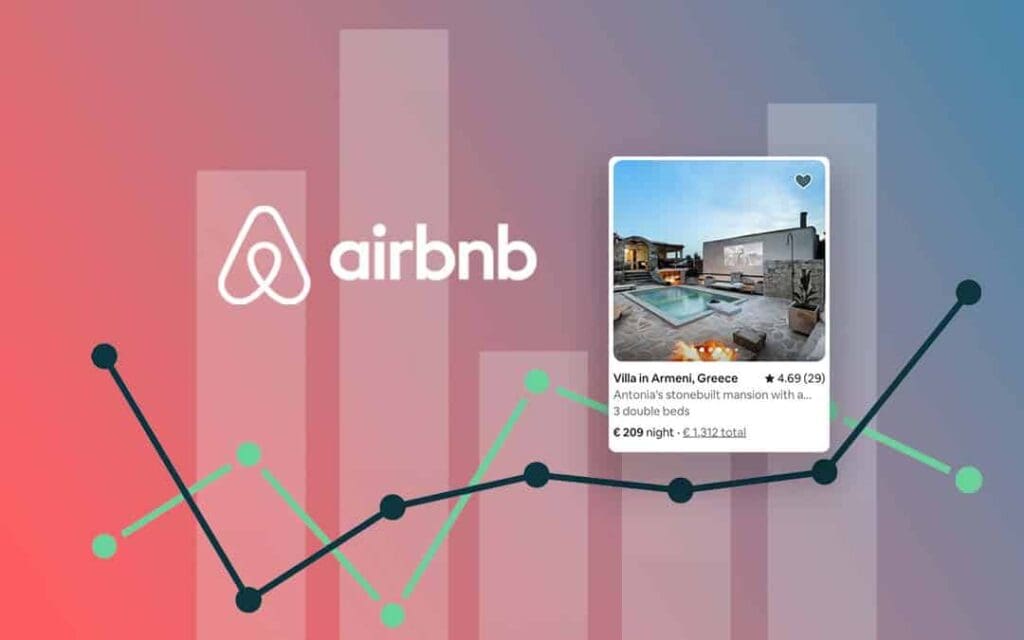Let’s talk about listing optimization—the real kind. The kind that takes a hard, honest look at your listing, uncovers the flaws, and transforms it into a high-performing machine that doesn’t just get clicks but converts them into bookings. I’m talking about optimization based on data, not gut feelings or opinions.
Here’s the brutal truth: most people shy away from truly critiquing their listings. Instead, they opt for easy fixes—rearranging photos or tweaking a setting here and there. But sometimes, the issue isn’t one small thing—it’s everything. I’ve seen it time and again: people hire a so-called “listing expert,” follow their advice, and still get no results. Why? Because that advice wasn’t grounded in data or guest behavior—it was based on superficial tweaks, gut feelings, and, in some cases, old-fashioned guesswork.
Why Most Listing Advice Misses the Mark
Recently, I saw a post in a short-term rental group from someone struggling to get bookings. She had worked with a listing expert who helped write her description and arrange her photos, yet her property was still underperforming.
The comments flooded in, full of suggestions like, “Move this photo,” or, “Change that setting.” And while everyone meant well, they were offering opinions—personal preferences that may or may not have any basis in data or guest behaviour.
When I jumped in and broke it down for her, my feedback wasn’t what she wanted to hear. I pointed out major flaws that went beyond surface-level fixes. Her response? She thought I was rude. Why? Because I questioned the work of the listing expert she had already paid.
But here’s the thing: the friendly advice she got wasn’t helping. And the expert she hired wasn’t delivering results. Why? Because the feedback wasn’t grounded in data or focused on guest behaviour. Instead, it was about maintaining a comfortable dynamic—and comfort doesn’t book properties.
Let’s Break Down the Real Issues
- The Photos:
Her property was beautiful, but the photos didn’t reflect its true potential. The “wow” shot—a lake view from the deck—was poorly lit, with harsh shadows and distracting sun reflections.
Here’s the brutal truth: it doesn’t matter if a professional photographer took the photos. Not all photographers specialize in capturing properties for short-term rentals. What looks good to a photographer might not appeal to your target guests.
I’ve seen this firsthand. In one case, a property owner changed their main photo to a “better” one—professionally taken, with perfect lighting. It looked great to them, but when we tracked the data, guest interactions dropped by 20%. Why? Because the new photo didn’t connect with the audience.
The Fix: Always test your photos. A “better” photo isn’t about your personal preference or the photographer’s opinion—it’s about what stops your guests from scrolling and makes them click. If the current photos aren’t working, bring in a new photographer and retest. - The Description:
The listing description was an unscannable essay filled with unnecessary fluff and sales objections. Worse, it used strong language like “NO SMOKING,” “DO NOT DO THIS,” and “ABSOLUTELY NO PETS” in all caps. These statements immediately create friction and turn off potential guests.
And then there was the storytelling. The “expert” had turned every mundane feature into a flowery narrative. Take this gem, for example:
“Immerse yourself in luxury as you sit on our state-of-the-art heated toilet seat, an experience so delightful you’ll never want to get up. Complete the moment with eco-friendly, high-quality toilet paper that will transport you back to your toddler years.”
Seriously? Guests don’t want to wade through paragraphs of fluff to learn that you have a heated toilet. They want clear, concise information that tells them what they need to know.
The Fix: Descriptions should be scannable and focus on features that matter to guests. Instead of:
“This bathroom offers an elevated experience with a heated toilet seat and eco-friendly toilet paper.”
Say:
“Bathroom: Heated toilet seat, eco-friendly toilet paper, luxury amenities.”
It’s clear, professional, and gets the point across without unnecessary fluff. - The Expert Problem:
One of the biggest issues with her listing was that she had worked with an “expert” who clearly didn’t deliver results. And I get it—when you’ve already paid for help, it’s hard to admit that it didn’t work. But the reality is, not all experts are created equal.
Just because someone runs a group or has a title doesn’t mean they know what they’re doing. In this case, the expert had focused on creating a listing that appealed to the owner, not the guests. That’s a critical mistake.
The Fix: When optimizing a listing, look for someone who:- Relies on data, not opinions.
- Challenges the status quo and doesn’t sugarcoat feedback.
- Focuses on what guests want, not what you want.
Why One-Time SEO and Listing Optimization is a Waste
When it comes to listing optimization, one-time sessions don’t work. Here’s why:
- You Can’t SEO Like Google: Listing optimization is not the same as SEO for websites like Google. SEO is about ranking high on search engines based on algorithms that rank keywords, backlinks, and other factors. However, the platforms like Airbnb, Booking.com, and others use completely different algorithms that focus primarily on guest behavior, engagement, and conversion rates. These platforms don’t rank listings based on keywords in the same way Google does.
- Gut-Feeling Optimization Doesn’t Cut It: A “one-time” listing optimization session is often based on someone’s gut feeling or experience, not data-driven insights. It may improve things in the short term, but it’s not sustainable. These experts usually don’t track the performance of their changes over time, meaning you could end up wasting money on changes that don’t align with your guests’ needs.
- Optimization Is a Process, Not a Quick Fix: A truly optimized listing requires ongoing testing, analysis, and adjustments. It’s about continuously refining based on the data—engagement metrics, click-through rates, booking conversions. This is how successful listings evolve.
Let me show you an example of what real optimization looks like.
The Brutal Truth: Why Friendly Feedback Doesn’t Work
It’s easy to find people who’ll tell you what you want to hear—friends, family, or “listing experts” who promise you the world with just a few quick fixes. But the reality is, friendly feedback rarely leads to meaningful improvements. You need someone who will:
- Remove Emotion from the Equation:
Your listing is a business tool, not a personal project. If you’ve poured your heart into creating the perfect vacation home, it’s tough to hear that certain elements aren’t working. But effective feedback needs to be direct and unbiased—focused on data, not feelings. - Focus on Data, Not Opinions:
A gut feeling might tell you to swap one photo for another, but is it backed by data? Research and guest behavior show that changing photos, descriptions, or even the order of information can increase engagement. Did you know that a single poorly lit photo can reduce click-through rates by as much as 20%? These are insights that come from real tracking and analysis, not guesswork. - Challenge the Status Quo:
Not all experts are created equal. The person advising you on your listing might have a background in general marketing or real estate, but that doesn’t mean they know the ins and outs of short-term rental optimization. Real optimization means questioning every detail, even if it goes against traditional wisdom or the “expert” advice you’ve received before.
Actionable Strategies for Listing Optimization
Here’s how you can start making real progress with your listings. These are the steps that turn data into action, not gut feelings.
- Audit Your Photos with Fresh Eyes:
Your hero shot is the first impression guests get of your property. Look at your photos objectively: Are they bright, welcoming, and emotionally engaging? Experiment with different angles, lighting, and even photographers. If your photos aren’t converting, it’s worth investing in a photographer who specializes in vacation rentals—not just general real estate photography. - Rewrite Your Description for Clarity:
When crafting your listing description, think about your ideal guest—not yourself. Your description should be easy to scan and packed with information guests need to make a decision quickly. Avoid long paragraphs or negative language. For example, instead of saying “NO PETS” or “NO PARTIES,” reframe it with something like, “Perfect for families or a quiet retreat.” This conveys the same message but in a more appealing way. - Use Data to Make Decisions:
Don’t just guess at what works—track what works. Use tools like A/B testing to evaluate which photos, titles, and descriptions resonate with guests. Keep an eye on your click-through rates, booking conversions, and even photo interaction metrics. This is the type of data that guides smart decision-making. For a deeper look at how guest behavior directly impacts performance, see this breakdown on understanding Airbnb booking conversion rates. - Ask for Brutally Honest Feedback:
If you’re serious about improving, find someone who won’t sugarcoat the truth. Whether it’s a professional reviewer or a trusted guest, ask for feedback that’s tough but constructive. Don’t be afraid of criticism—it’s the fastest path to making impactful changes. - Optimize Beyond the Listing:
Listing optimization doesn’t end with the description or photos. Pay attention to your pricing strategy, guest reviews, and overall guest experience. Even the best listing won’t perform if the price is out of whack with the market or if your reviews are lacking.
Why Brutal Honesty Works
Optimizing your listing is about much more than giving compliments or rearranging a few photos. It’s about facing the hard truth, analyzing what’s working and what’s not, and making data-driven changes. If your listing isn’t performing, don’t settle for surface-level advice. Find someone who will dig deep, critique your listing honestly, and provide the feedback that will actually move the needle.
Remember: guests don’t have time to sift through endless listings. They make decisions in seconds, and if your listing doesn’t grab their attention immediately, they’ll keep scrolling. Every detail of your listing—photos, descriptions, price—needs to work together to engage guests and drive bookings.




